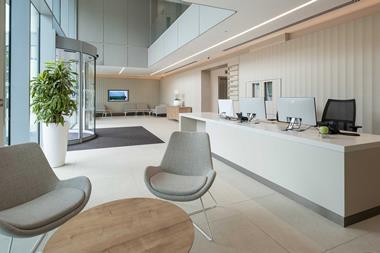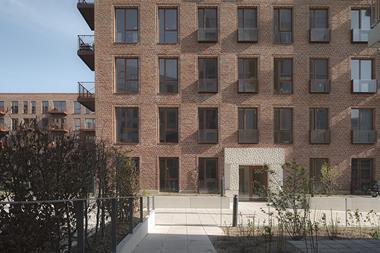The UK is grappling with what to do with swathes of office space in danger of becoming obsolete. There is an urgent need to find viable alternative uses for underutilised space – not just for the benefit of investors and developers, but also for the communities affected by vacancies.
Caroline McDade, head of national planning at Real Estate and Strutt & Parker, describes a growing dichotomy. “We’ve got this massive challenge around the future of offices and, whilst there is a sort of headlong rush into very good quality stock in very good locations – particularly the City and the other major office locations in and around London – we are seeing a big glut of offices coming to the market, outside of those core locations,” she says at a media event by BNP Paribas Real Estate.

The event, entitled The Odyssey of Offices, acknowledges the difficult journey the subsector is on and the challenge property owners have in working out what to do with potentially obsolete office space. McDade says: “If offices are not in demand in those locations, what is the alternative use that is possible? And how do you make it stack up?”
Last week, US-based hotelier MCR announced it had acquired the BT Tower in London for £275m (€321m) with the aim of repurposing the grade II-listed communications tower into a hotel.

For BT Group, the sale of the asset in Fitzrovia forms part of the telecommunications firm’s plans to simplify its operations and lower costs across the company, including reducing the number of offices in its estate from more than 300 to around 30.
According to Naomi Nettleton, real estate partner at law firm Charles Russell Speechlys, repurposing London’s iconic buildings as hotels is a growing trend. She cites, as another example, the recent opening of the Old War Office – which has been and rebranded The OWO.

She says investors have been looking for income from assets and so the trend in the residential rental market has been for purpose-built properties – build-to-rent communities with spaces designed for modern living.
“This makes retrofitting a building like the BT tower more challenging,” Nettleton says. Interest rates remain high and so iconic, historic buildings may require longer-term investment horizons than some property funds can offer. “This creates opportunities for other uses, like hotels,” she says.
McDade cites Delta Point in Croydon and Paper Mill House in Uxbridge as some of the most successful examples of repurposed office-to-residential spaces in the UK. “No local authority wants to see lots of vacant office stock in their area. It’s not good for them in terms of their economic profile, but it’s not good for the communities that they serve as well,” she says.
“We’re seeing some gradual changes, but particularly those in core locations where it’s easier to make it stack up – ie in central London, where you see office conversions to other uses, like hotels, residential and other more viable uses. But there are not that many that stack up for obvious conversion. This has been the challenge for several years now.
“We are gradually seeing some of the London boroughs starting to move towards recognising that this is an issue for them and considering what can they practically do to change that.”
Acknowledging the need for adaptation
The City of London is “acknowledging that there is an issue and is looking at their planning policy”. A relaxation of rules could help efforts to convert buildings, but McDade admits that “offices often don’t convert easily to residential or anything else.”
She continues: “But if you’re going to knock it down, you’ve got a lot of things that are stacked against you in terms of viability. Knocking it down triggers a whole set of planning requirements like affordable housing, carbon challenge – ie, how much of embodied carbon are you releasing by knocking it down, which particularly for institutional investors becomes a real issue. And then you’re up against financial contributions, like community infrastructure levy, etcetera. So there is a bit of a move towards repurposing.”
McDade says the UK government has seen this as an opportunity to “improve housing supply given that we’ve got a real housing crisis in this country”. As a result, the government has put forward suggestions which could streamline the planning process and relax some of the controls that have been in place for a few years.
“We’ve got clients that are getting a bit excited about what they can do with their assets, using a more streamlined planning process, so it costs less and it’s consented more quickly, and therefore gets assets occupied and used again,” McDade says. “We are currently marketing one in Uxbridge and have many more coming to the market, but also where we are looking for life-cycle solutions, relocating the tenants and addressing their demands as occupiers as well as advising on the future of their existing office assets.
“With large office buildings or sites, we are increasingly seeing multi-use bids proposed or single bids for part of it, such as for senior living. It will be important for developers to work more in partnerships to be creative in identifying alternative uses and making it work financially.”
In a consultation launched this month, the UK government has , potentially allowing the conversion of former offices, research and development sites, and industrial buildings to new uses.
But there are still potential constraints, particularly where local authorities intervene. “I can foresee tension between local authorities and government, as the government is trying to relax the rules on one hand and local authorities don’t want that because, particularly for office-to-residential conversion, it can create substandard residential accommodation.”
The other challenge is the issue of under-resourced planning authorities, which slows the planning system and can impede the granting of planning permissions. “We’ve got at least 25% less local authority planners than we had 12 years ago,” McDade says. “And that all adds to the challenges around delivery of planning.”
To read the latest 91��ý���� magazine click here.
















